1.Design stage
Structure selection: According to the function, span, load and other requirements of the building, choose the appropriate space frame structure form, such as flat plate space frame (including two-way orthogonal orthogonal space frame, two-way orthogonal diagonal space frame, three-way space frame and so on) or curved surface space frame (such as cylinder shell space frame, spherical shell space frame and so on). For example, for a large-span stadium, a three-way space frame may be chosen because of its high spatial stiffness, which can better withstand various complex loads.
Mechanical calculation: Use professional structural analysis software to carry out mechanical calculation on the selected space frame structure. Determine the internal force and stress distribution of the rods, as well as the stress situation of the nodes, to provide a basis for the design of the rods and nodes. In this process, various load combinations need to be considered, such as constant load (including the self-weight of the grid frame, the weight of roofing materials, etc.), live load (personnel activities, snow load, etc.), wind load, etc.
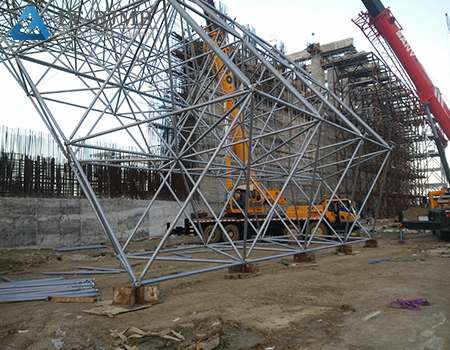
Detailed design: According to the results of mechanical calculations, determine the shape, size and length of the cross-section of the rod, as well as the node construction form. The design should meet the strength, stiffness and stability requirements, while considering the convenience of fabrication and installation. For example, the cross-section shape of the bars may be selected as round steel pipe, square steel pipe or angle steel, etc. The node form may be welded ball node, bolted ball node or steel plate node, etc.
2.Material Preparation
Raw Material Purchase: Purchase steel, welding rods, bolts and other materials according to the design requirements. The steel should have quality certification documents, and its varieties, specifications, performance, etc. should be in line with the current national standards and design requirements. For important space frame structures, steel may need to be double-checked to ensure the quality. For example, the wall thickness deviation of steel pipe should be within the permissible range, and the mechanical property indexes such as yield strength and tensile strength of steel should be in accordance with the regulations.
Material Inspection: The purchased materials are inspected, including appearance inspection (checking the surface of steel for cracks, corrosion, pockmarks and other defects), dimensional measurements and mechanical property tests. For example, sampling of welding rods to check whether the chemical composition and mechanical properties of the molten metal meet the standards.
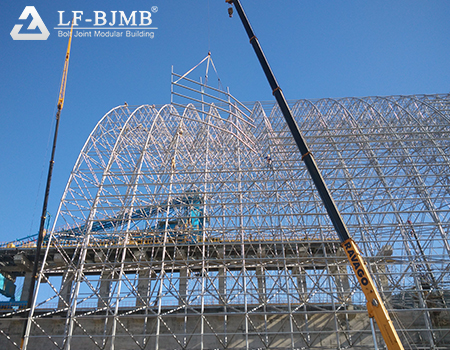
3.Rod processing
Cutting and discharging: use cutting equipment (such as CNC flame cutting machine, plasma cutting machine, etc.) to cut and discharging the steel according to the design size. The cutting process should ensure the flatness and perpendicularity of the cutting surface and control the precision of the cutting size. For round steel pipe, beveling may also be required for subsequent welding.
Bending and molding (if necessary): For some bars with curvature requirements, such as some of the bars in the curved space frame, bending and molding is required. Cold bending or hot bending can be used, cold bending molding accuracy is higher, but for some thick-walled or high-strength steel, may need to use hot bending. In the bending process, the bending radius and bending angle should be controlled to avoid cracks or excessive deformation.
Rod processing accuracy control: the processed rod should be checked for dimensional accuracy, including length, diameter (or side length), curvature and so on. The permissible deviation of the length of the rod is generally within the range of ± 1 – 3mm, and the deviation of the diameter (or side length) should be in accordance with the requirements of the steel product standards. For the precision does not meet the requirements of the rod, need to be trimmed or scrapped.



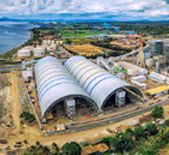
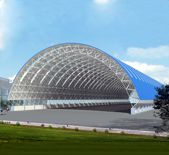
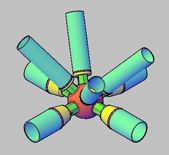
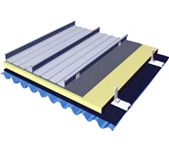
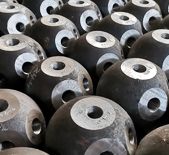



 About Us
About Us 2025-05-02
2025-05-02


